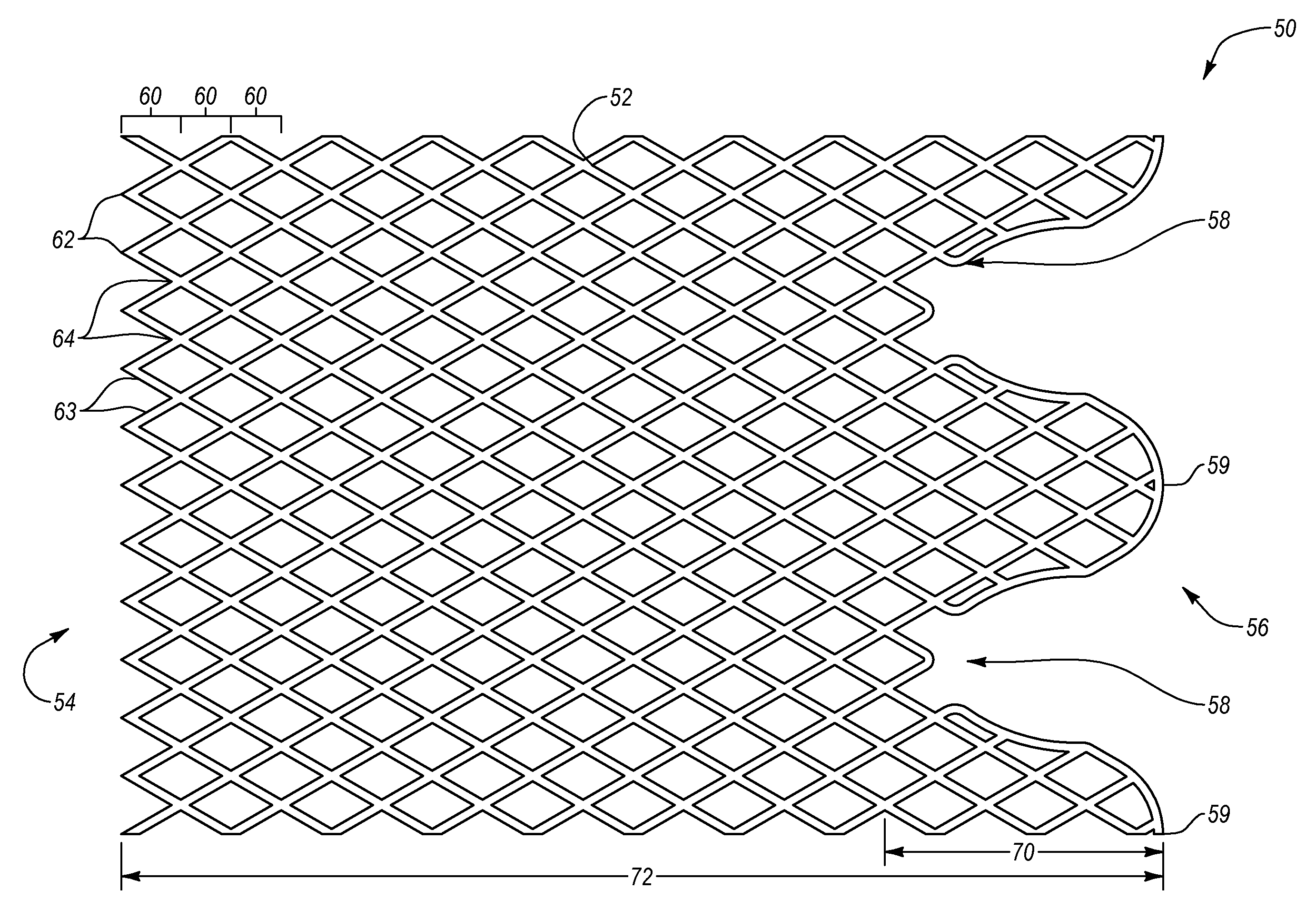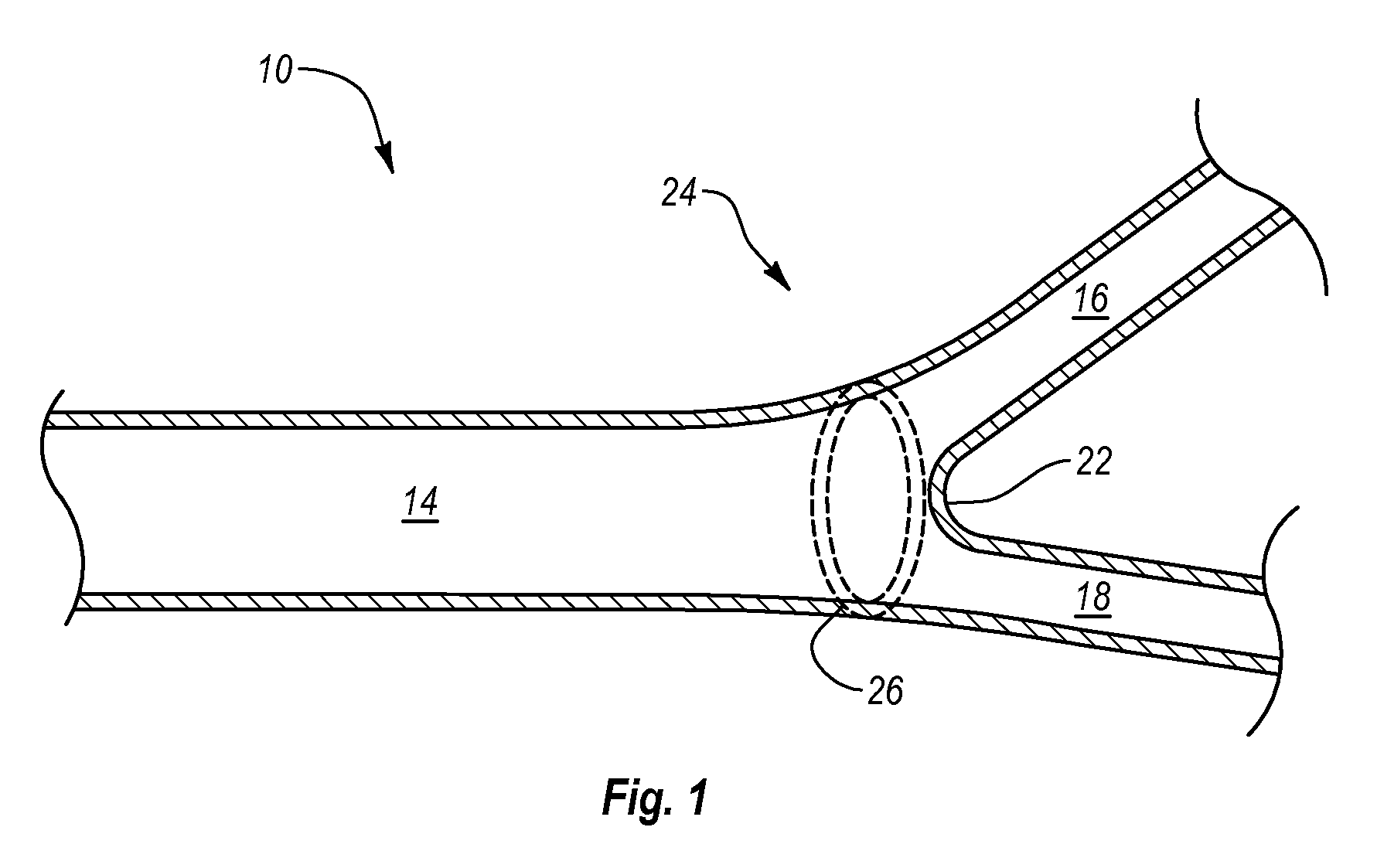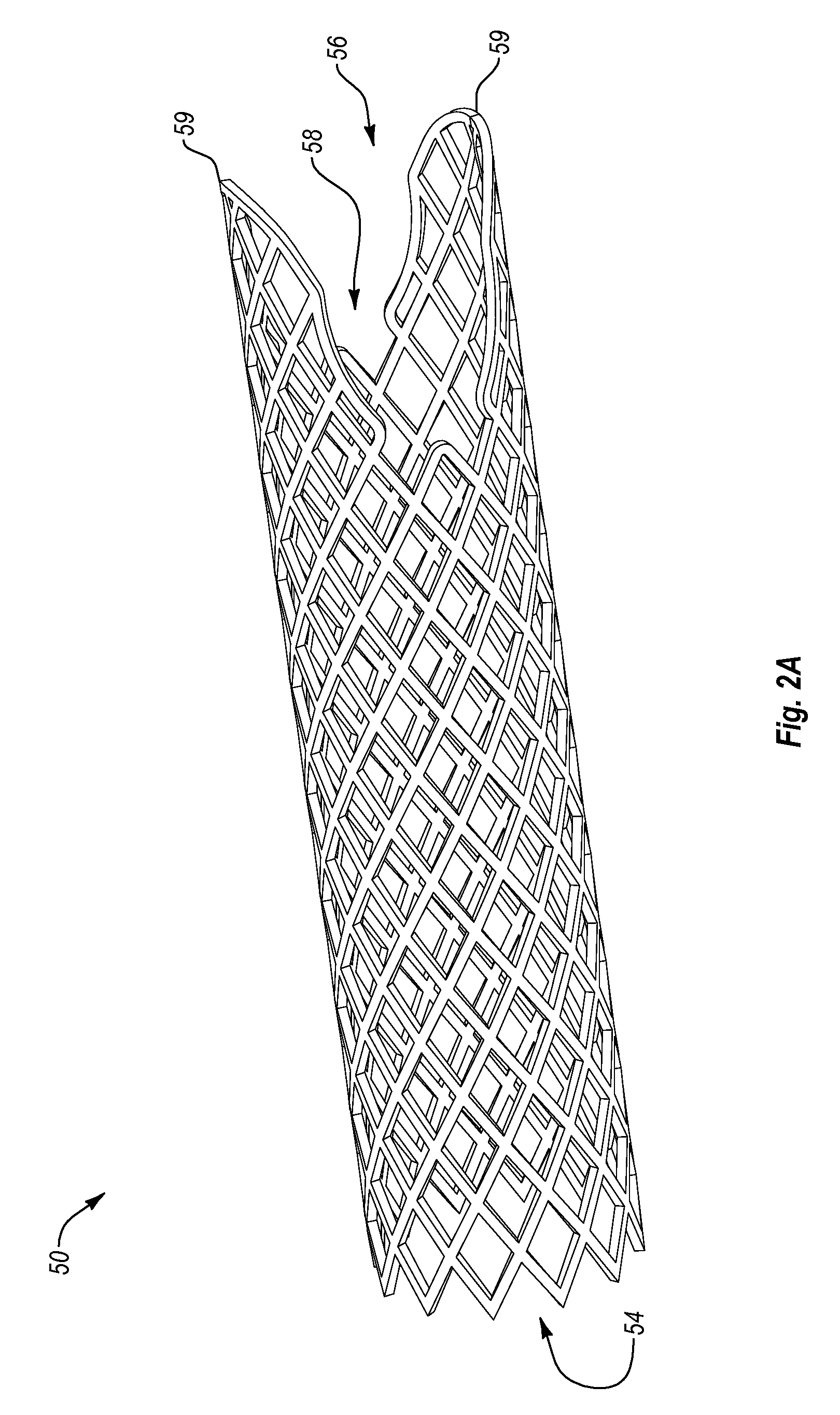Expandable endoprostheses, systems, and methods for treating a bifurcated lumen
a technology of endoprosthesis and endoprosthesis, applied in the field of implantable medical devices and delivery systems, can solve the problems of increasing the complexity of implanting, inadequate scaffolding, and single conventional implantable medical device to treat a bifurcated lumen, and achieve the effect of increasing the expandability
- Summary
- Abstract
- Description
- Claims
- Application Information
AI Technical Summary
Benefits of technology
Problems solved by technology
Method used
Image
Examples
Embodiment Construction
[0043]Implementations of the present invention include systems, methods, and apparatus for treating bifurcated lumens that account for anatomy and lesion characteristics common at lumen bifurcations. For example, one or more implementations of the present invention include an expandable implantable medical device or prosthesis having a distal end configured to allow the device to conform to the anatomy of a bifurcated lumen. In particular, the distal end of the implantable endoprosthesis can include at least two wings and at least two troughs that provide the distal end with increased expandability. The endoprosthesis of the present invention can provide optimal scaffolding of a bifurcated lumen by covering the main lumen proximate the bifurcation and the lateral sides of the lumen side branches.
[0044]Additionally, the systems, methods, and apparatus of the present invention can provide optimal scaffolding of a bifurcated lumen, while also preventing the traumatization of the carina...
PUM
 Login to View More
Login to View More Abstract
Description
Claims
Application Information
 Login to View More
Login to View More - R&D
- Intellectual Property
- Life Sciences
- Materials
- Tech Scout
- Unparalleled Data Quality
- Higher Quality Content
- 60% Fewer Hallucinations
Browse by: Latest US Patents, China's latest patents, Technical Efficacy Thesaurus, Application Domain, Technology Topic, Popular Technical Reports.
© 2025 PatSnap. All rights reserved.Legal|Privacy policy|Modern Slavery Act Transparency Statement|Sitemap|About US| Contact US: help@patsnap.com



